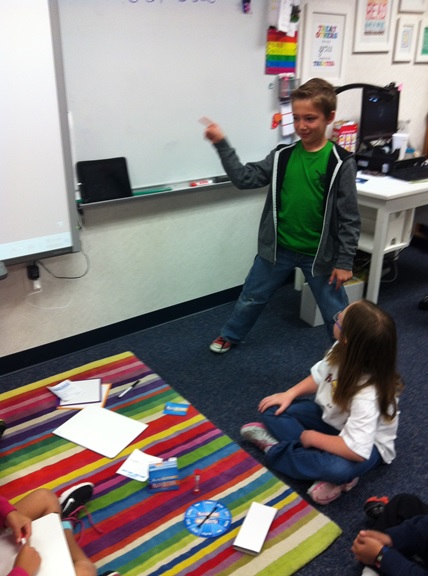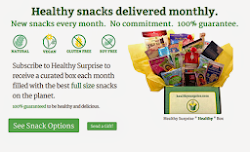I love Donor's Choose. I know many of us use the site to help provide our classrooms with materials and activities we otherwise could not afford (or should not have to pay out of our own pockets). Of course I love the site for myself, but I also love to go on and browse other teachers' pages. Honestly, it really helps ME put things in perspective. After all, I AM pretty lucky to work in a school with mid to high SES. And sometimes, many times actually, it's nice to be reminded...because I'll be honest, it is quite easy to forget.
So, although I do work in a school with a higher socioeconomic status population, there are still items out there that I wish to have in my room to help my students succeed. And for that, I'm thankful for Donor's Choose! I have submitted a total of 3 projects, 2 of which have been filled. (The one that didn't was actually my first project, which I submitted in late April, early May, not even realizing how that would impact the project getting funded or not. Now, I know better to "plan" my projects and their timing!)
The latest project I had funded this year was "Fabulously Focal Math Fluency: Building Our Speed In Grade 2". It centered around math fluency supplies to help my students build their foundational skills in other ways than just file folder games. Don't get me wrong-- I'm SO not hating on file folder games...trust me, I have PLENTY, and my students use them daily. It was nice, though, to have new, fun, and different centers for the students to use for math facts, because let's face it, they are SO important. I think my favorite part of my submission hits home on this point:
"Grover Whitehurst, the Director of the Institute for Educational Sciences (IES), noted this research during the launch of the federal Math Summit in 2003: "Cognitive psychologists have discovered that humans have fixed limits on the attention and memory that can be used to solve problems. One way around these limits is to have certain components of a task become so routine and over-learned that they become automatic." These new math items will help all learners with this fluent retrieval!"
ANYWAYS...enough with the ramble...now it's time to share what all came with my funded project:
~Math Dash: A fun way to practice math facts, instead of simple flash cards. Students pick a color, draw a "fact", and if correct, get to place their "fact" tile down on the sum or difference. First color to get 4 numbers in a row on the board wins. You can read the actual rules/directions here. Review? My class LOVED it! And all it was was simple addition and subtraction problems...but having them in this new format was great!
~Math Mat: A plastic, battery powered "mat" that spouts out questions about numbers, counting, addition, subtraction, and even missing addend. Players listen to question, then press correct answer. Features 3 games with 2 skill levels each, although we stayed pretty much on level 2. The level 1 questions were a tad too easy for end of the year in 2nd grade. Review? Another GREAT tool my kiddos loved! It was fun, colorful, talked, and they got to move. I loved it because they had to listen to the question before answering, so it also taught them that even though it was fun, they couldn't be CRAZY or loud, because they would miss their question!
~Math Diction: A "Pictionary" type game, where students would draw a math vocabulary word or phrase. Then, they would spin to see if they had to act it out, draw it out, give a hint, or read the definition for their partner to guess. Review: Although the cards were separated into Grade 2, 3, and 4, some of the 2nd grade cards were not content we learned, and some of the 3 and 4 cards were! Nevertheless, it was a good little review game where my students got to think about important vocab from throughout the year (that otherwise, we may not have had time to review!).
 |
| Thinking and drawing a math word/phrase during Math Diction! |
 |
| Acting out a math vocab word/phrase during Math Diction! |
Three other parts of our project not photographed were Mathological Liar, Block Building, and Place Value/Ordering/Missing Number cards.
 Matological Liar is an interesting little game that we played as a whole class. It is a "card game" based on sets of math mysteries. Each round is a new "case". Each "case" presents a setting and a problem. There are 4 suspects per case, one or more who may be guilty. Out loud, I would read the "case", and then read each of the 4 cards containing each suspect's alibi. If the math in a suspect's alibi is correct, then he is innocent. Incorrect math indicates guilt. Players decide if their suspect is innocent or guilty as a table! (These are not the "exact" directions, because it is meant to be a small group game, but I loved doing it as a whole class!) Then, on white boards, tables would tell me who the guilty person/people are and WHY. This made them think about their math reasoning and work together. There are over 50 "cases", and needless to say, we did NOT get to them all! Review: SO very awesome, and I'm so glad to have this fun game for future use.
Matological Liar is an interesting little game that we played as a whole class. It is a "card game" based on sets of math mysteries. Each round is a new "case". Each "case" presents a setting and a problem. There are 4 suspects per case, one or more who may be guilty. Out loud, I would read the "case", and then read each of the 4 cards containing each suspect's alibi. If the math in a suspect's alibi is correct, then he is innocent. Incorrect math indicates guilt. Players decide if their suspect is innocent or guilty as a table! (These are not the "exact" directions, because it is meant to be a small group game, but I loved doing it as a whole class!) Then, on white boards, tables would tell me who the guilty person/people are and WHY. This made them think about their math reasoning and work together. There are over 50 "cases", and needless to say, we did NOT get to them all! Review: SO very awesome, and I'm so glad to have this fun game for future use. The Block Building and Place Value/Ordering/Missing Number cards were more individual activities, but our class loved them both, too.
So, enough about me. Tell me about you! What all have you submitted in the past? What all have you had funded? (My first project was for a NOOK Tablet that my children loved to use and abuse...)
I'd love to hear about your experiences (and maybe even get some ideas...), so feel free to leave me a comment below! :)




























Your students look like they are having a BLAST with these new materials! Thanks for sharing.
ReplyDeleteBest,
Margie, DonorsChoose.org Marketing Team